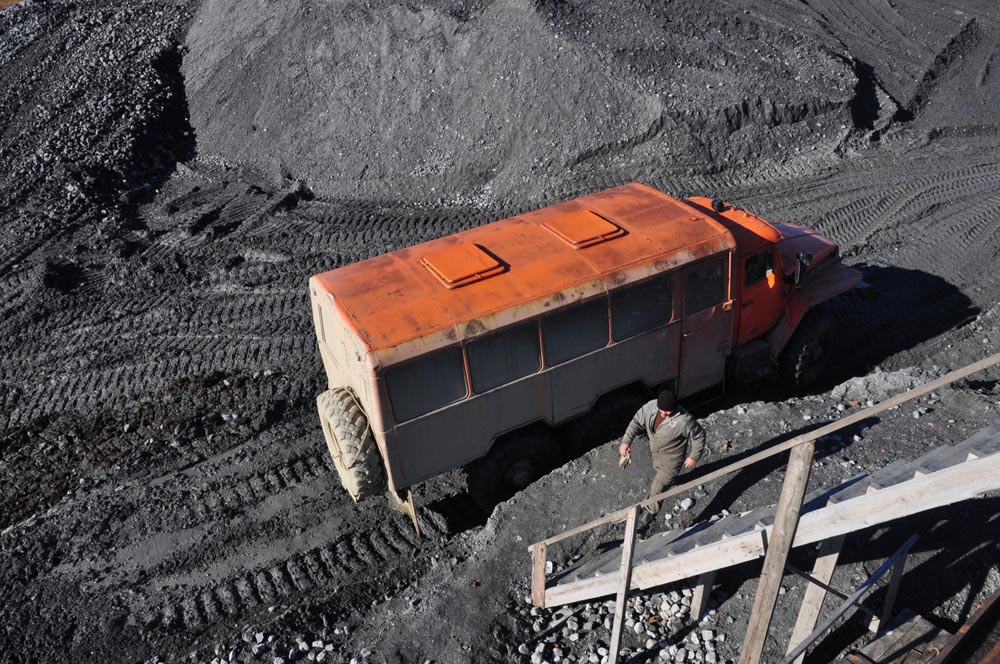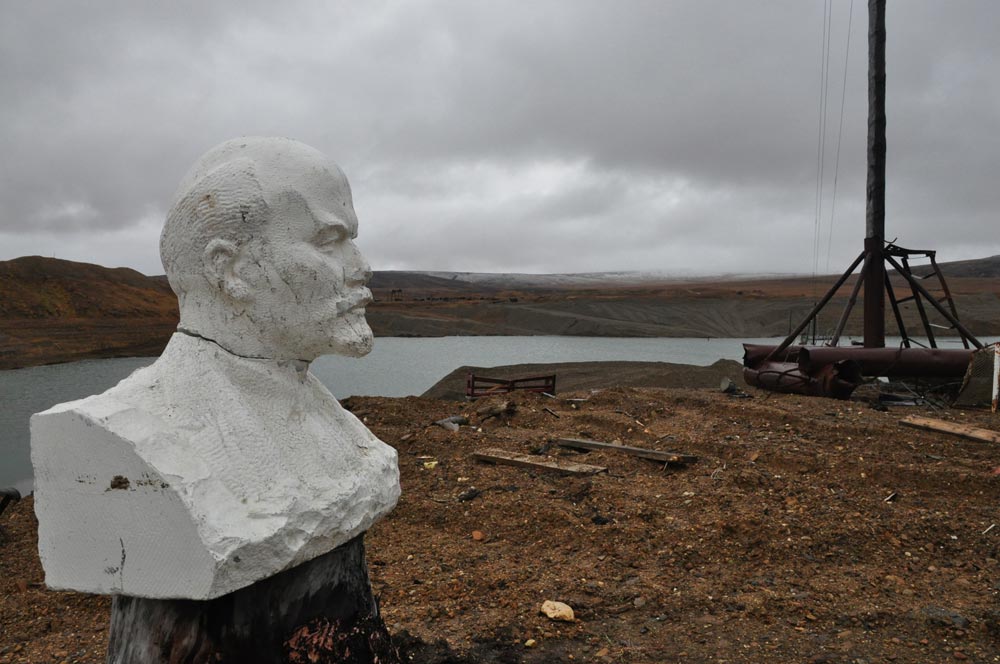Russia’s Gold Coast

Over the past 20 years, some 50 men from the Shakhter (Miner) cooperative have been mining gold just a few kilometers off the Arctic Ocean, in the very north of Chukotka (9,000 km east of Moscow).
Dmitry Likhanov, Ogonyok
There used to be a lot of gold in this region, but now it is rare and it is mined from alluvial deposits.
Dmitry Likhanov, Ogonyok
To get 1 gram of gold dust, you need to wash one ton of rock.
Dmitry Likhanov, Ogonyok
The gold is washed near the village of Leningradsky and in the Skvoznoy area. There is also a base at Cape Schmidt.
Dmitry Likhanov, Ogonyok
These rigs were once used to monitor military supply depots on Cape Schmidt. The military left, but the rigs remained.
Dmitry Likhanov, Ogonyok
Farsh (a nickname translated as “minced meat”) is the last to remain in the once-densely populated village of Leningradsky. He lives with his dogs and doesn’t even dream of returning to the mainland.
Dmitry Likhanov, Ogonyok
More than half of the gold miners come from Ukraine’s mining regions. These people know what it means to work hard.
Dmitry Likhanov, Ogonyok
The money earned from the sale of Russian gold will be used to educate Ukrainian children, or spent on their weddings or car purchases.
Dmitry Likhanov, Ogonyok
In a few minutes, these morose-looking men will set off to mine gold. Their shift lasts six months, followed by six months at home and then back to Chukotka. Many have lived this way for decades.
Dmitry Likhanov, Ogonyok
The Skvoznoy area. Alluvial gold settles in mats like these. This is not work for the weak: It is performed all day in the wind and in icy water.
Dmitry Likhanov, Ogonyok
This bar of gold is worth $240,000.
Dmitry Likhanov, Ogonyok
Processing gold concentrate is labor-intensive work. Some things can be done with machines, but a lot has to be done manually, especially in the final stage.
Dmitry Likhanov, Ogonyok
Large nuggets are rare here – gold is found mainly in dust form, but even that is becoming rare.
Dmitry Likhanov, Ogonyok
Gold smelting is a hazardous industry. The smell of metal mixed with borax is vile. Miners have been smelting for many years.
Dmitry Likhanov, Ogonyok
The airfield at Cape Schmidt. The ghosts of northern aviation, they are now guarded by one security guard and a few stray dogs.
Dmitry Likhanov, Ogonyok
The Ural is a tundra track used to transport people, food products and gold.
Dmitry Likhanov, Ogonyok
There used to be a seaport here, but today cranes and diesel barrels rust on the Arctic coast. Polar bears visit more often than people do.
Dmitry Likhanov, Ogonyok
There used to be a seaport here, but today cranes and diesel barrels rust on the Arctic coast. Polar bears visit more often than people do.
Dmitry Likhanov, Ogonyok
A plaster statue of Lenin sadly surveys Chukotka.
Dmitry Likhanov, OgonyokAll rights reserved by Rossiyskaya Gazeta.
Subscribe
to our newsletter!
Get the week's best stories straight to your inbox